May 5th – Usakos
I have a few days left for rock paintings in Namibia, the recurring theme of this Southern Africa journey. So far I have only seen the rock engravings, at Twyfelfontein and at Peet Alberts Koppie, but now I head for the Brandberg. This is the location of the most famous rock painting of Namibia, the White Lady, as well other shelters.
The first stop is Usakos. There are lots of obscure rock paintings in this area, and apparently, the man at the Shell service station in town can give directions. Unfortunately, he wasn’t there, so I only managed to visit the most well-known of the paintings here, in Phillip’s Cave – the one that is well-signposted, including a designated small parking area and a well-marked path to the cave. This has long ago been declared a national monument; nothing like the Zimbabwe experience, where rock paintings are usually hard to find.
Phillips’s Cave itself is pretty small, not much more than a rock shelter, really, and there are not that many paintings. Which makes it all the more amazing that the Abbe Breuil, an authority on European rock paintings in the middle of the 20th Century, wrote a whole volume on the these images. Henri Breuil was also the one who established that the White Lady, where I will be going tomorrow, and which he found similar to 3000 year old figures from Crete, must have been painted by Greek artists who reached Southern Africa long ago. After all, it would have been unthinkable, would it not, that these images had been made by any of the primitive African tribes?
photo: elephant rock: except for paintings, the area around Phillip’s Cave is also known for its peculiar-shaped rocks, like this one in the form of an elephant
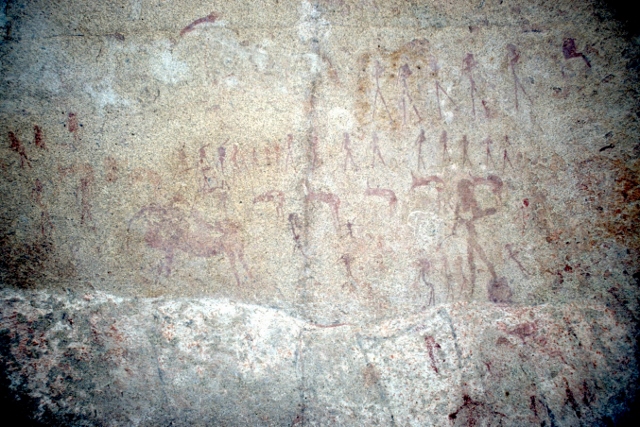

May 6th – the Brandberg
When I arrived at the Central Hotel in Omaruru, where I had a booking for two nights, the hotel was closed. Only after repeatedly ringing the bell, and then banging the doors, somebody came outside to ask me what I wanted. The fact that I had a booking for two nights did not impress him, “Aber das Hotel ist geschlossen!” – the hotel was closed – until six o’clock. And it was now half past five. The idea of letting me in did not naturally occur to the hotel owner, and only after a lot of talking he agreed to let me in my room, but only in my room.
Exploring the rock paintings of the Brandberg is best done early morning, or late afternoon, because in the middle of the day it gets really hot. Yet, the first stop in the Brandberg, the painting of the White Lady, was still some two hours drive from Omaruru, and a 45 minute walk, so I left before 7 am, and without breakfast, because that would only be served after nine.
Arriving at the well-signposted parking lot, I had my first disappointment. There were already four other cars! Once again, this is not like Zimbabwe, where you have the paintings entirely for yourself. On the way to the shelter itself I met the first tourists coming back, already, but the real big shock came at the site, where I encountered no less than 15 Germans! This is not how it is supposed to be. Next, I discovered that the paintings were fenced off, you couldn’t really come close. For good reasons, obviously; there have been problems with vandalism, people have this irredeemable urge to write their own names on the rock next to the paintings, some even think it necessary to add their own expressions of rock art to the gallery, and for a while it was popular to splash lemon juice on the paintings, to try to enhance them. So I had to content with observing the paintings through bars, luckily in peace and quietness after a while, when the Germans returned to the parking lot again.
The White Lady, the main painting at the Maack Shelter, in fact is not a lady and isn’t white either. The paint is, but the figure is a shaman, now generally accepted to have been painted by the Bushmen, perhaps some 2000 years ago – and not by some visiting Mediterranean people, as suggested by Abbe Henri Brueil in the years after WW II. Another fact is that this is definitely one of the most beautiful rock painting scenes that I have observed so far, varied in subject matter with people and several animals, detailed in the execution of the paintings, and the range of colours used. Well worth the drive, and the walk.
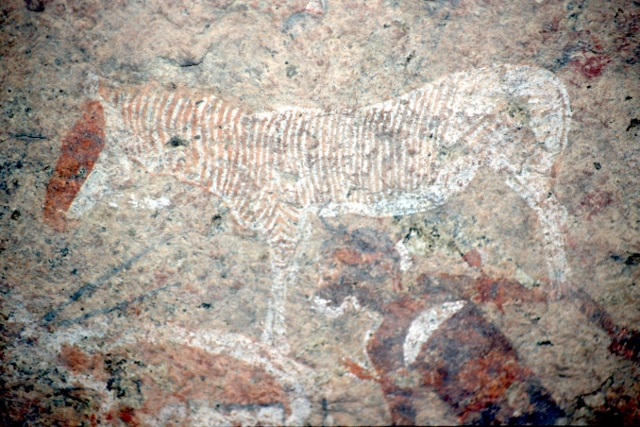
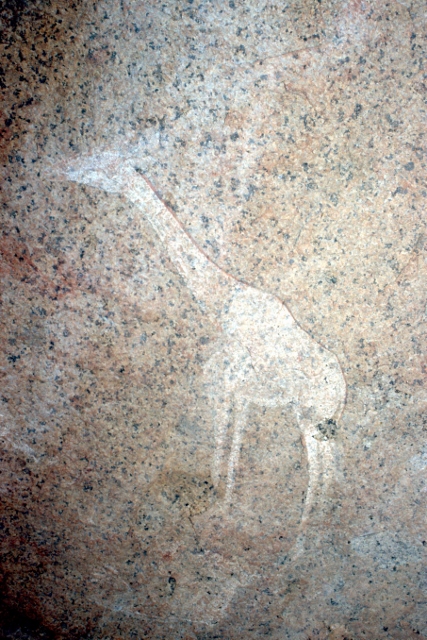
And it got even better. The Brandberg area is home to many more paintings. Unlike the White Lady, however, these are a lot less famous, and there are no tracks, no signposting, no nothing. Except that earlier, I had found a sketch map with another ten shelters annotated. So I set off from Maack Shelter with the White Lady to try to find some of the others. It was already getting a lot hotter, and without tracks I found myself scrambling up and downhill, over boulders, and rapidly exhausting myself. But with some success: by one o’clock I had found five out of eight locations – the other two were clearly too far away. And even though the paintings were not as spectacular as the White Lady panel, there is a certain satisfaction in finding the shelters, without anybody else around – no tourists, no guides -, and nothing but my sketch map.
I finally got back to the parking lot by three o’clock, exhausted, but with a good feeling of achievement. Never mind that I did exactly what I was not supposed to do: wandering around the Brandberg at midday!
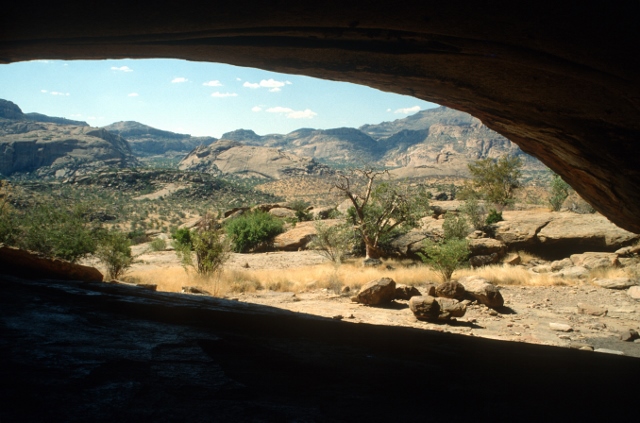


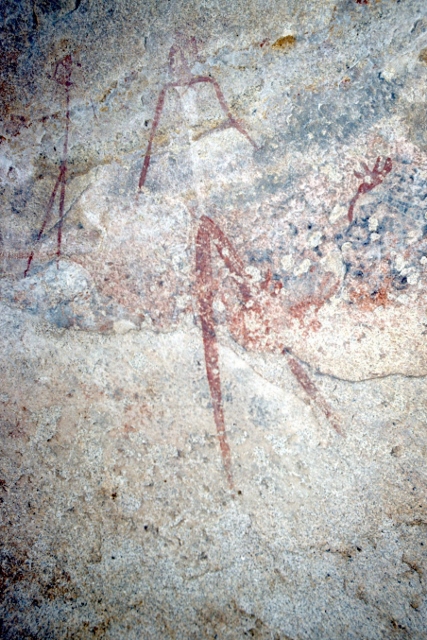



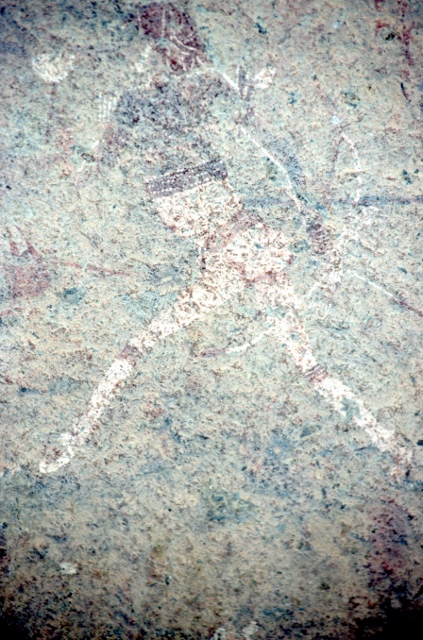














Well done detailed article on the White Lady paintings. I loved Namibia.
Glad you liked it, Elaine. I hope the site is as good as it was 35 years ago, when those pictures were taken.